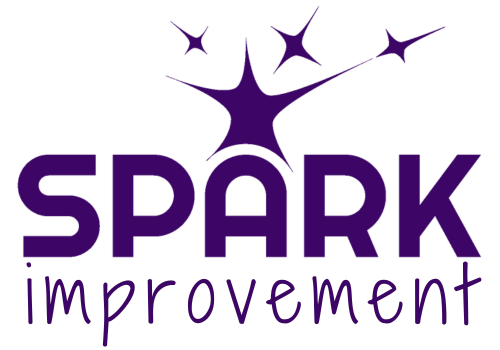3 Ways to Brainstorm Better
Brainstorming is a very useful and valuable tool when you need to generate ideas. I’d be willing to bet that all CI practitioners (and probably the majority of managers generally) have been in a brainstorming session at some point.
But are they always effective?
Do the creative, innovative ideas flow easily?
Not always.
It can be awkward. Trying desperately to think of ideas, possible causes or solutions that have not already been discussed.
For the facilitator, it can be painful trying to encourage people to open their minds and look at something differently, or trying to help them not to get trapped in one direction or concept.
For some people, being creative and ‘freewheeling’ ideas is just an uncomfortable thing to do, and actually they would rather be ANYWHERE else than sat in this meeting room being told to ‘think outside the box’ (Sorry, I tried to avoid using that phrase).
I’d like to suggest a few tweaks you could make to your brainstorming sessions to help you engage people, to keep it punchy and interesting, and to encourage the flow of ideas.
Tip #1 – Start individually, in silence
Often brainstorming is facilitated as a whole group activity. Usually by asking people to call out ideas or perhaps taking it in turns to say something.
The problem here is that the first few ideas will likely obscure other thoughts that people might have. They can be distracted by what someone else thinks, the path that someone else’s thoughts are taking.
Instead, I recommend you start the session with people working individually, writing their ideas on a stack of sticky notes.
EXTRA TIP: give everyone a flip chart marker – the thicker nib ensures the words are easy to read and also encourages people to be concise.
Working on their own, in silence, ask the group to write out all the ideas they can think of, however random or unlikely they seem. Let them work for 5-10 minutes, then ask people to add their ideas to the wall, explaining them as they go.
People can then add to their sticky notes – if they hear something that inspires them to think of a new idea.
You can set a target here – ask every person to come up with, say, 10 ideas minimum. The focus here is on quantity, not necessarily quality.
Tip #2 – Encourage discussion, debate and critique
Yes, this is controversial.
Most brainstorming advice/training will tell you that the most important thing is that there is no debate or criticism.
That every idea is written down and no-one is allowed to say anything negative.
Actually, studies have shown that when debate and criticism are encouraged, groups produce more ideas, and also those ideas are more creative and innovative.
By pointing out flaws, valuable discussion is stimulated.
By asking questions and critiquing someone’s idea the whole group can better understand that person’s thoughts.
This can be a tricky thing to facilitate. You don’t want people being unkind or undermining each other.
But you can encourage people to be curious and probe a little deeper without being negative and nasty.
My suggestions of gentle ways to encourage discussion and to dig a little deeper:
‘My immediate reaction is that X would be tricky because of Y, but are there ways we could work around that?’
Here you are acknowledging that the idea sounds a little bonkers, but you are encouraging people to try to think around it.
‘Out of curiosity, how do you think that might work?’
By preceding a question with ‘Out of curiosity’ helps to soften a question and makes it easier to ask and answer (I learned this trick from the wonderful Michael Bungay Stanier in this brilliant book).
‘I might be misunderstanding this, but wouldn’t that be difficult because of X?’
By preceding a question with ‘I might be misunderstanding this’ you are questioning your own ability to understand what they are saying rather than questioning the validity of their idea. Again, that makes it softer and a little easier to answer.
Tip #3 – Sleep on it
I have found it’s best to split a brainstorming session into two halves, across two days.
Hold the first half towards the end of the day (mid afternoon onwards) and the second half the following day as early as possible.
This way, the group have had a chance to digest the ideas, think them over and perhaps bring a different perspective.
This short period of overnight gestation can really help brilliant ideas form in our brains.
It is often when we ‘switch off’ that great ideas come to us, or clarity can somehow occur.
But be careful that you don’t leave a long gap between these two halves of the session.
In my experience, if it is longer than about 36 hours then this technique is not as effective. If too much work and meetings and general business get in the way, then those ideas swilling around in people’s brains can drift off and be forgotten.
So, I hope those three tweaks might help you to make your brainstorming sessions more effective.
Do you have any tips to share about brainstorming?
Or any techniques you turn to when the ideas dry up and it feels awkward?
Please let me know in the comments.




